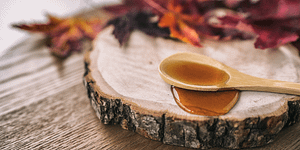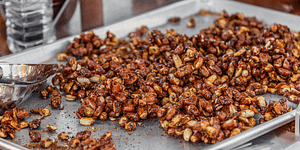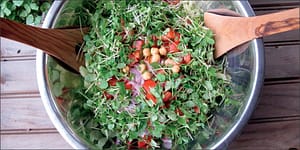Preparing and Cooking Rabbit

Ever wonder how you can mix up you or your family’s meal routine? How about substituting in some rabbit instead of conventional meats! The idea of eating a rabbit for dinner may feel overwhelming, but here are some quick tips and tricks to get you started on preparing and cooking one of your own.
The following is an excerpt from Raising Pastured Rabbits for Meat by Nichki Carangelo. It has been adapted for the web.
We display our meats at the farmers market in a Cambro (a restaurant-grade insulated container) packed with ice, because whole chickens and pork chops are beautiful, and people buy more when they can see it without having to ask. Usually once per market someone will pick up a fresh rabbit, and I can see the wheels start spinning in their head. Based on a few years’ experience, I know they are probably asking themselves these three questions:
1. Do I have time to cook a rabbit this week?
2. Will my kids or spouse freak out?
3. How do I cut this thing up?
To quell their anxiety about question three, I start by asking them if they know how to part a chicken. If the answer is yes, I say, Great! Then you can definitely part a rabbit. If they say no, my follow-up question is: Do you have a sharp knife?
How to Butcher a Rabbit
Butchering a rabbit is simple and similar to breaking down a chicken. The following is a step-by-step guide to help you through the process.
1. To butcher a rabbit, start with a sharp knife—ideally a cleaver.
2. Stand up the rabbit and use the tip of the knife to break through the breastbone.
3. Split the rib bones going down either side of the back.
4. Using the tip of the knife again, remove the hind legs at the joint.
5. Similarly, remove the forelegs.
6. Use the cleaver to break through the backbone, behind the ribs, and separate the ribs from the loin.
7. Separate the loin from the backbone.
8. When you’re done, you will have eight pieces plus the backbone and the collar.
Cooking with Rabbit
Rabbits are incredibly versatile in the kitchen. With a few minor adjustments, you can basically cook them all the ways you can do a chicken: roasted, sautéed, poached, grilled, stewed, braised, shredded, and the list goes on. Laszlo and I served buttermilk-fried rabbit at our wedding.
Most cultures around the world have their own ways of cooking rabbits, and if you eat out a lot you have probably seen it on a menu without even realizing it was there. The French call it lapin, the Italians coniglio, and in Chinese it’s tù ròu. So roast it with a bouquet garni, make a rustic cacciatore, poach it with soy sauce, or cook it in a tagine—it’s all delicious. Just remember these three quick tips:
- Fryers, or young rabbits that are less than 31⁄2 pounds (1.6 kg) dressed, are the sweetest and most tender. They can be used successfully in virtually any preparation.
- Older, larger rabbits are considered roasters or stewers. Their meat is tougher than fryers, so they should be cooked slowly— either braised or, as the name suggests, stewed. Ironically, roasters are not very good when roasted.
- For safety, the USDA recommends cooking rabbit to an internal temperature of at least 160°F (71°C).
Those are the basics, but otherwise go nuts.
Recommended Reads
Recent Articles
What’s so great about oyster mushrooms? First, you can add them to the list of foods that can be grown indoors! They are tasty, easy to grow, multiply fast, and they love a variety of substrates, making oyster mushrooms the premium choice. The following is an excerpt from Fresh Food from Small Spaces by R. J.…
Read MoreCraving something sweet? These delicious maple roasted nuts are the perfect treat to help you push through those end-of-winter blues. The following is an excerpt from Full Moon Feast by Jessica Prentice. It has been adapted for the web. The Magic of Maple: A Rich History Following the Hunger Moon, just before the first thaw…
Read MoreDoes the cold weather have you dreaming about fresh greens and colorful salad? Grow and harvest sprouts indoors to make those dreams a reality! Follow this quick start guide to year-round greens for fresh salad greens in just a couple of weeks! The following is an excerpt from Year-Round Indoor Salad Gardening by Peter Burke. It…
Read More
















